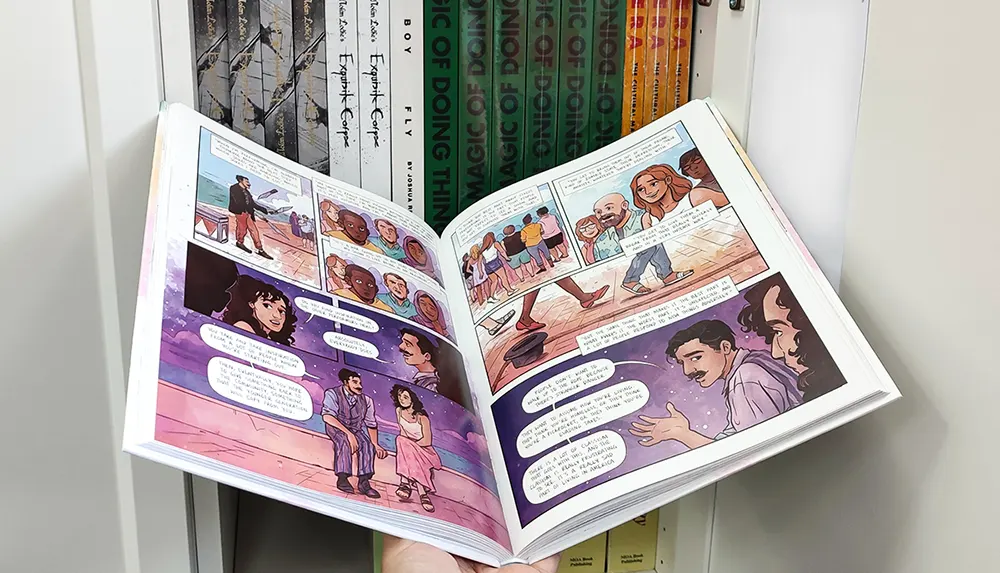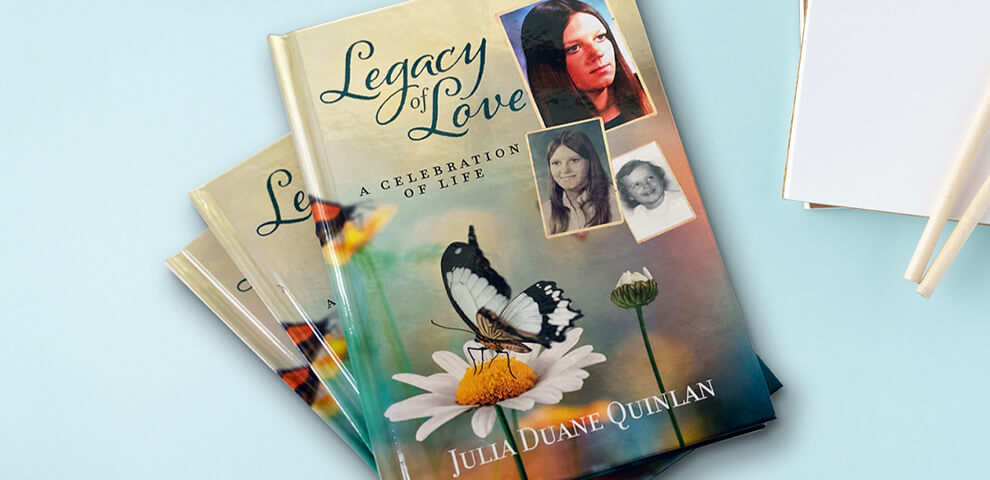A Comprehensive Guide to the Process of Hardbound Books Printing
When you start the trip of hardcover book printing, understanding the entire procedure is vital. As you navigate via binding and high quality control, you'll find that every choice affects the book's general allure.
Comprehending the Hardcover Publication Structure
When you discover the world of hardbound books, you'll promptly observe that their framework is deliberate and distinct. The external casing, commonly made of strong cardboard, offers longevity and security. You'll locate a fabric or natural leather covering, which not only boosts looks but likewise contributes to the book's durability. Inside, the endpapers attach the cover to the text block, making sure a smooth interchange.
The text block itself includes several trademarks, or folded up sheets, sewn with each other for strength. You'll see that the spine is strengthened, enabling for a smooth lay-flat analysis experience - hardcover books. In addition, guide's weight frequently communicates a sense of high quality and durability
Hardbound publications commonly include a dirt coat, which offers as a marketing tool while safeguarding the cover. Comprehending these aspects assists you appreciate the craftsmanship behind hardbound publications and their special allure in the literary globe.
Manuscript Prep Work and Modifying
Obtaining your manuscript prepared for printing is necessary, and it begins with appropriate formatting guidelines. You'll need to understand the editing procedure to improve your job and guarantee it resonates with viewers. Plus, mastering proofreading methods can aid you catch those troublesome errors before your book mosts likely to publish.

Manuscript Formatting Standards
Appropriate manuscript format is vital for developing a professional-looking hardbound publication. Begin by choosing a conventional font style like Times New Roman or Arial in 12-point dimension. Use double-spacing throughout the record to improve readability. Establish your margins to 1 inch on all sides, providing your message room to breathe. Number your web pages in the leading right edge, and include your chapter titles at the beginning of each new section. Usage clear headings to show areas, and avoid excessive formatting like strong or italics unless essential. Make certain to proofread your manuscript for consistency in style, making sure that every little thing from spelling to spacing abides by your chosen guidelines. Following these steps will set a solid foundation for your book.
Modifying Process Essentials
Editing your manuscript is a vital step that can transform it from an outline right into a sleek end product. Start by reading through your job seriously, concentrating on clarity, framework, and circulation. Try to find disparities in your narrative, personality advancement, or argumentation. It's valuable to take breaks in between rounds of editing to obtain fresh viewpoints. Don't hesitate to reduce unneeded web content or rephrase unpleasant sentences; this will certainly improve readability. Consider seeking feedback from trusted peers or professional editors who can provide beneficial insights. Keep in mind, modifying isn't nearly dealing with errors; it's about improving your voice and ensuring your message reverberates with readers. Welcome the process, and you'll see your manuscript sparkle.
Proofreading Methods Overview
When you have actually polished your manuscript with editing and enhancing, the next step is to assure it's totally free of mistakes that can distract visitors. Begin by taking a break after editing and enhancing; fresh eyes catch blunders much better. Read your manuscript aloud-- this assists you listen to awkward phrasing and area typos. Usage electronic tools like spell checkers for initial scans, however do not count solely on them. Think about publishing your manuscript; analysis theoretically can reveal errors that screens miss. Concentrate on one sort of mistake at once, whether it's punctuation or grammar, to avoid feeling overwhelmed. Lastly, get a relied on friend or professional proofreader to offer a fresh point of view. Their feedback can highlight issues you may neglect.
Designing guide Cover and Interior
When you're creating your publication cover and interior, you'll desire to concentrate on crucial layout components that catch your audience's attention. Choosing the appropriate typography designs and meticulously picking shades and imagery can make all the distinction in sharing your publication's theme. Allow's discover exactly how these choices can boost your job and draw in readers.
Essential Layout Aspects
Creating an eye-catching publication cover and a well-designed inside is important for bring in visitors and boosting their experience. Choose shades and images that mirror your book's style and mood.
A tidy, organized design assists visitors browse effortlessly. Remember, a cohesive style throughout your book cultivates a specialist look that can significantly affect a visitor's choice to select it up.
Choosing Typography Styles
Typography plays a crucial role in both look at this web-site guide cover and interior design, shaping exactly how visitors view your material. When picking typography styles, consider your publication's genre and target market. A classic serif font may work well for literary fiction, while a contemporary sans-serif may fit a modern book. Assurance readability; your text must be simple on the eyes, particularly for longer passages. Focus on font size and line spacing, as these aspects affect overall flow. Blending fonts can include passion, yet restrict it to two or three to maintain comprehensibility. Assume concerning pecking order-- utilize different designs for headings and body message to direct readers easily via your work. Your typography choices will greatly influence the viewers's experience.
Shade and Imagery Choice
Choosing the right shades and imagery is essential for recording visitors' focus and communicating your book's styles. Start by considering your style; vibrant shades might help a children's publication, while muted tones fit a mystery book. hardcover books. Usage imagery that reverberates with your content-- images, illustrations, or abstract styles can boost your message
When developing the cover, make specific the images does not overwhelm the title and author's name; clearness is crucial. This natural strategy not only elevates your book's aesthetic however additionally improves the viewers's experience, making it more unforgettable.
Selecting the Right Paper and Products
When choosing paper and products for your hardbound publication, it's important to contemplate exactly how they'll affect the general appearance and feeling of your task. Beginning by picking the right paper weight; heavier stock frequently conveys top quality and resilience, while lighter paper can create a more delicate touch. Consider the finish as well; shiny paper boosts shades and photos, while matte can supply an advanced, downplayed look.
Towel, leather, or printed paper can establish the tone for your publication. Furthermore, think about the binding products; utilizing top quality adhesive warranties your publication lasts.
Ultimately, the selections you make right here reflect your vision, so put in the time to example different materials (hardcover books). Your options will help develop a book that's not just visually enticing however also durable and functional
The Printing Process: Strategies and Technologies
A range of printing strategies and innovations can bring your hardcover book to life, each offering one-of-a-kind advantages. Digital printing is a preferred option for brief runs, enabling fast turn-around and economical solutions. It's best when you Source need to print smaller sized quantities without giving up high quality. On the other hand, countered printing excels in creating large volumes, supplying top quality and constant outcomes. This method is optimal for extensive publications where color precision and great information matter.
Recognizing these strategies aids you make notified decisions, ensuring your hardcover book not only looks fantastic but additionally fulfills your production needs effectively. Pick the ideal method to elevate your publication's charm and effect.
Binding Methods for Hardbound Books
Numerous binding methods can change your hardcover publication into a resilient and eye-catching product. An additional technique is the ideal binding, which makes use of glue to hold the web pages together, enabling for a smooth spine however less toughness contrasted to situation binding.
You could also think about spiral binding, which enables your book to lay flat, making it optimal for guidebooks or workbooks. Each binding approach has its benefits and fits various requirements, so believe regarding your book's purpose and audience when choosing the best option for your task.
Top Quality Control and Last Touches
After picking the right binding technique for your hardcover book, quality control becomes vital to confirm your last item satisfies your expectations. Start by inspecting the published web pages for any type of errors or inconsistencies in shade and format. You do not intend to miss any kind of typos or misprints that might affect your readers' experience.
Following, inspect the binding integrity. Confirm the web pages are safely attached which the spine is Go Here durable. A well-bound book not just looks professional however also really feels durable in your hands.
Additionally, pay attention to the cover. Look for any kind of scuff marks or misalignments in the art work. Make sure they're used constantly across all duplicates. if you've decided for special coatings like embossing or foil marking.
Lastly, perform a thorough examination of the entire set before transferring to circulation. In this manner, you can validate that every book mirrors your high standards.
Regularly Asked Questions
For how long Does the Hardcover Publication Printing Process Normally Take?

What Is the Minimum Order Quantity for Hardbound Books?
The minimum order amount for hardcover books generally begin around 100 copies, but it can differ based on the printer. You ought to talk to your picked printing solution for their specific needs and prices.

Can I Publish Hardbound Books in Custom Sizes?
Yes, you can print hardcover books in custom sizes. Numerous printing services provide versatility with dimensions, enabling you to choose a format that suits your project. Just confirm the requirements prior to positioning your order.
Exist Eco-Friendly Options for Hardbound Publication Printing?
Yes, you can discover environment-friendly choices for hardbound book printing. Numerous companies use recycled materials and lasting inks. Just ask your printer about their green techniques to assure your job aligns with your environmental worths.
What Are the Expenses Connected With Hardcover Publication Printing?
When taking into consideration hardbound book printing costs, you'll require to consider materials, design, and printing approaches. Extra expenses like shipping and binding can additionally affect your overall spending plan, so plan accordingly for your task.
When you begin the journey of hardbound book printing, understanding the whole process is important.A selection of printing methods and technologies can bring your hardbound book to life, each offering unique benefits. How Lengthy Does the Hardcover Publication Printing Refine Usually Take?
The hardcover publication printing process generally takes about 2 to 6 weeks.Yes, you can locate environment-friendly options for hardbound publication printing.